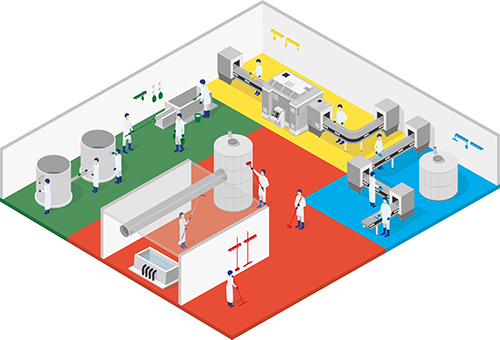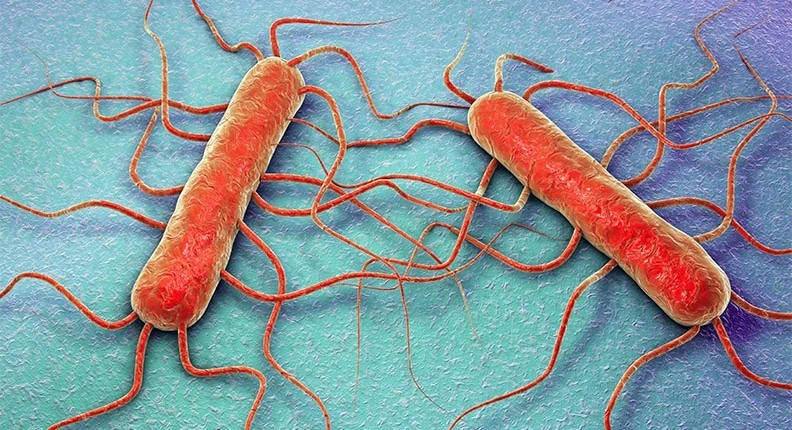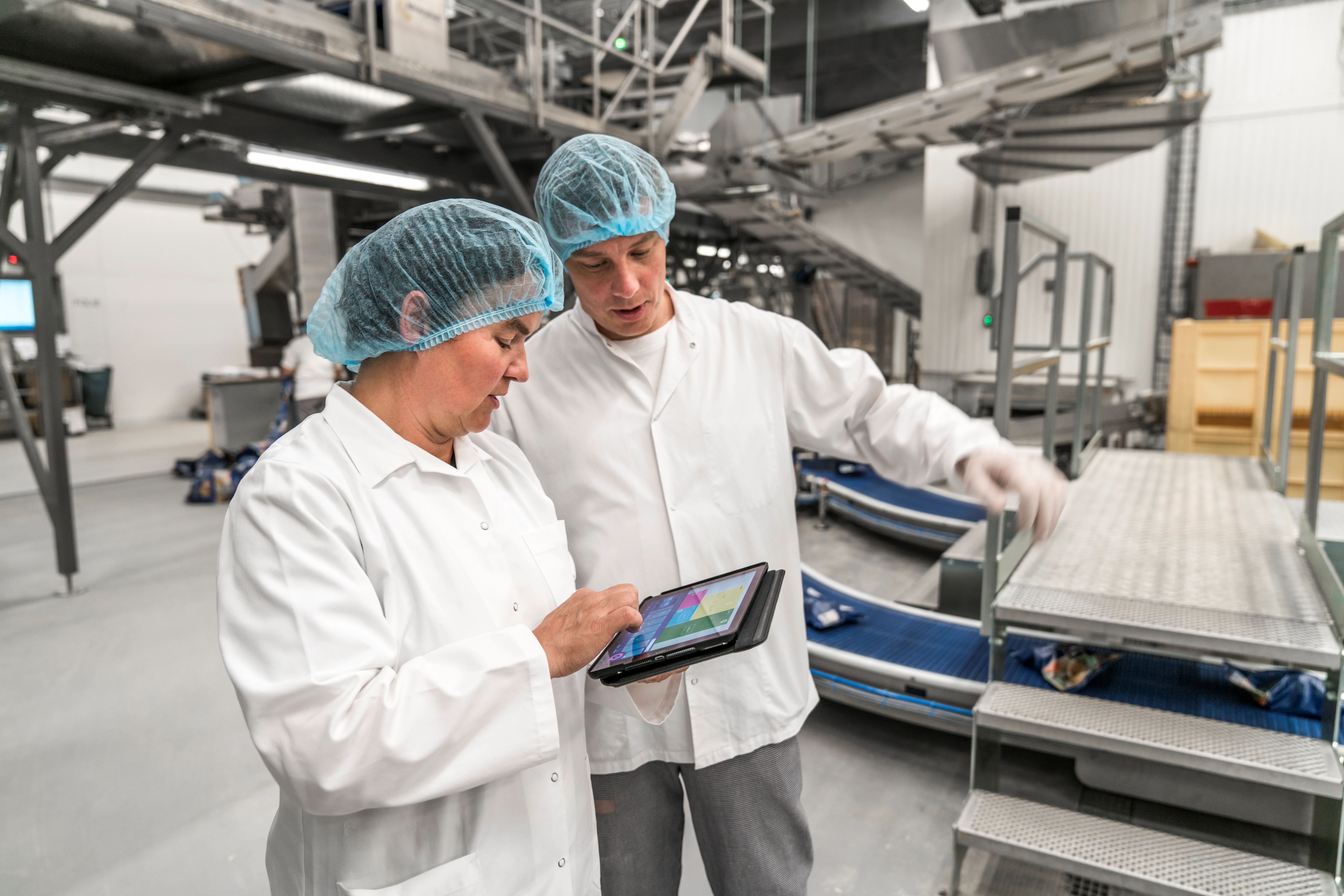Cleaning equipment and its importance in the control of Listeria in food production
Listeria monocytogenes is a dangerous bacterium that can cause food poisoning and poses a serious threat to food safety in production environments.
In 2015, Public Health England reported 169 cases of listeriosis in England and Wales. While this number might seem low, the mortality rate for Listeria infections is alarmingly high at around 30%. The elderly and unborn or newborn babies are particularly at risk. Listeria monocytogenes is the only species within the Listeria genus recognized as a human pathogen, but all Listeria species share similar growth conditions. Therefore, the presence of non-hazardous Listeria strains may indicate the possible presence of Listeria monocytogenes.
This bacterium is commonly found in the natural environment and can be associated with foods grown near soil, such as leafy greens. Listeria has several characteristics that make it a concern:
- It can grow slowly at refrigeration temperatures, making it a significant issue in chilled ready-to-eat (RTE) foods.
- It can persist in food production environments, especially where there's ample moisture.
- It forms protective structures like biofilms, which help it survive harsh conditions.
These traits allow Listeria to contaminate food even after processes designed to eliminate other pathogens, posing challenges for food manufacturers.
Cleaning Equipment – Preventing Cross Contamination
Cleaning tools are often overlooked when it comes to maintaining a Listeria-free production area. Here are some important practices:
- Always clean cleaning equipment after each use to prevent cross-contamination.
- Store squeegees in a sanitizing bath when not in use. Ensure the solution is frequently refreshed, as organic material on the tools can reduce its effectiveness.
- Hang up cleaning equipment when not in use. Leaving it on the floor can create damp areas where Listeria can grow.
- Use color coding to differentiate between cleaning tools used in different zones. This helps avoid mixing equipment across areas, especially between product-contact and non-product-contact surfaces.
- Replace worn-out tools regularly, as they can become breeding grounds for bacteria like Listeria.

The FDA recently outlined four key zones for controlling Listeria in ready-to-eat (RTE) food facilities in the USA. These zones are also relevant to operations in the UK and EU:
Zone 1: Direct food contact surfaces (e.g., blenders, conveyors)
Zone 2: Non-food contact areas adjacent to food contact surfaces (e.g., equipment frames, drip shields)
Zone 3: Non-food contact areas not close to food contact surfaces (e.g., walls, drains)
Zone 4: Remote areas (e.g., offices, locker rooms)
Read more
Listeria monocytogenes is a highly dangerous foodborne pathogen. The 2017–2018 outbreak in South Africa, which resulted in approximately 950 cases and 180 deaths, highlights the severity of the threat. Producers of high-risk products must be aware of Listeria risks and implement proper control measures. Plant managers should ensure that all staff receive training on identifying contamination risks, practicing good hygiene, and preventing future outbreaks.
Recent blog posts

Listeria, its most common hideouts, and where to clean
If you produce chilled, ready-to-eat foods, knowing where to clean is essential to prevent contamination. This post explores the most common hiding places for Listeria and offers practical cleaning tips to keep your facility safe.

Maximize Global Food Safety Scheme compliance
Learn how Global Food Safety Schemes like BRC, FSSC 22000, and SQF address cleaning tool requirements and how you can optimize your audit performance by selecting the right tools.

Benefit from the full Vikan experience with a Vikan site survey
A custom Vikan site survey ensures your investment delivers maximum value. In industries with strict hygiene standards, such as food processing, a tailored approach is essential for success.
Ombre Lace Front Wig,Hair Extensions 3 Tone,Hair Bundles For Women,Body Wave Hair
Xuchang KANAZI Hair Products Co., Ltd. , https://www.kanazihair.com



